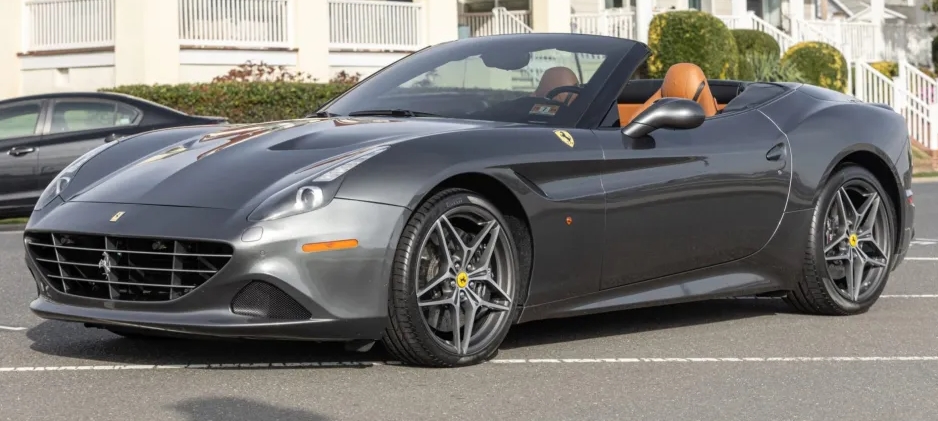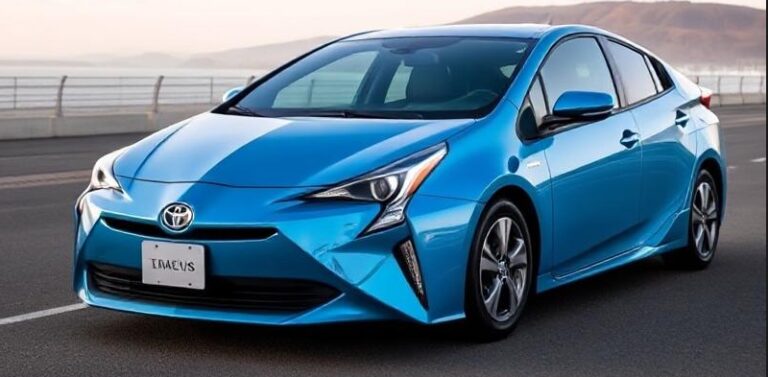The Turbocharged Renaissance: Charting the Evolution of the Ferrari California T
In the pantheon of Ferrari, few models represent as pivotal a moment as the California T. It was more than a mere facelift of its predecessor; it was a profound statement of intent, a technological pivot that would redefine the Prancing Horse for a new era. The “T” in its name, signifying “Turbo,” was not just an addendum but a revolution, heralding the return of forced induction to a series-production Ferrari V8 for the first time since the legendary F40. Produced from 2014 to 2017, the California T’s evolution is a story of refinement, response to criticism, and the successful marriage of Grand Tourer comfort with supercar soul.
Part I: Setting the Stage – The Predecessor (2008-2014)
To understand the significance of the California T, one must first appreciate the car it replaced: the Ferrari California. Launched in 2008, the original California was a vehicle of many “firsts” for Maranello. It was the first front-engined Ferrari with a V8, the first to feature a seven-speed dual-clutch transmission, and the first to sport a retractable hardtop. It was designed to be the most versatile Ferrari yet, a car that could be a comfortable daily driver, a cross-continental tourer, and a thrilling sports car all at once.
Powered by a glorious, naturally-aspirated 4.3-litre V8 producing 453 horsepower, its engine was a masterpiece of sound and response. However, the California faced criticism from brand purists. Its styling was considered softer and less aggressive than its mid-engined siblings, and its handling, while capable, was tuned more for comfort than for razor-sharp track performance. It was a hugely successful car commercially, bringing new clients to the brand, but the perception lingered that it was the “softer” Ferrari. Maranello listened intently. The stage was set for an evolution that would silence the critics while retaining the versatility that made the original so popular.
Part II: The Revolution Arrives – The 2014 Ferrari California T
Unveiled at the 2014 Geneva Motor Show, the Ferrari California T was immediately recognizable as a descendant of the original, yet it was a vastly different machine. Approximately 80% of its components were new. The mission was clear: inject more aggression, more technology, and significantly more performance.
The Heart of the Matter: The F154 BB Engine
The centerpiece of this transformation was the all-new 3.9-litre (3,855 cc) twin-turbocharged V8 engine. This was a seismic shift. Ferrari’s engineers were tasked with the immense challenge of creating a turbocharged engine that felt and sounded like a naturally-aspirated Ferrari, eliminating the dreaded “turbo lag” that plagued lesser forced-induction engines.
They succeeded spectacularly. The new V8 produced a mighty 552 horsepower at 7,500 rpm and a colossal 557 lb-ft of torque in seventh gear. This represented a gain of nearly 100 horsepower and, more critically, a staggering 49% increase in torque over its predecessor. The key to its character was a suite of sophisticated technologies. A flat-plane crankshaft, typical of Ferrari V8s, ensured a sharp, exhilarating engine note. Compact, low-inertia twin-scroll turbines minimized spool-up time. Most ingeniously, Ferrari implemented Variable Boost Management, a system that electronically limited torque in lower gears, progressively unleashing the full amount as the driver shifted up. This created the sensation of a naturally-aspirated engine with a relentlessly building wave of power, rather than a sudden, unwieldy torque spike. The result was a 0-62 mph (0-100 km/h) time of just 3.6 seconds and a top speed of 196 mph (316 km/h).
Aesthetic and Aerodynamic Overhaul
The styling of the California T was a direct response to feedback on the original. Penned by the Ferrari Styling Centre in collaboration with Pininfarina, the design was significantly sharper and more assertive. The front fascia was completely new, featuring a wider, more aggressive grille and sleek, F12berlinetta-inspired headlights. The flanks of the car gained a distinctive character line sweeping from the front fender vent back towards the muscular rear haunches, a nod to the classic 250 Testa Rossa pontoon fender.
The rear was equally transformed. The controversial stacked quad-exhausts of the original were replaced with a more traditional and aggressive horizontal twin-pipe layout, integrated into a newly designed, functional rear diffuser. Every surface was honed for aerodynamic efficiency, increasing downforce and stability without the need for ostentatious wings.
The interior also received a significant upgrade. While retaining its luxurious 2+2 configuration, it featured a new, higher-resolution 6.5-inch infotainment screen with Apple CarPlay functionality—a novel feature at the time. Between the central air vents sat the new Turbo Performance Engineer (TPE), a digital touch-sensitive display that could show information like turbo pressure, response, and efficiency, constantly engaging the driver with the car’s advanced powertrain.
Sharpened Dynamics
To match the engine’s newfound ferocity, the chassis and suspension were comprehensively re-engineered. The California T featured a 12% quicker steering rack for more immediate turn-in. It was equipped with the latest generation of Magnaride magnetorheological dampers (SCM3), which could react to road conditions and driver inputs in milliseconds, providing a sublime balance between ride comfort in “Comfort” mode and taut body control in “Sport” mode. The F1-Trac traction control system was also retuned to manage the immense torque, allowing the driver to exploit the car’s performance with confidence.
Part III: Refining the Formula – Models and Options
Unlike mass-market manufacturers, Ferrari does not offer traditional “trim levels.” Instead, the evolution of a model is seen through year-on-year refinements and the introduction of key optional packages that dramatically alter the car’s character.
The Standard California T (2014-2017)
The standard model, produced throughout the car’s lifecycle, was the foundation. It was the ultimate expression of the modern Ferrari GT: breathtakingly fast, technologically advanced, and comfortable enough for a weekend getaway. The level of personalization was nearly infinite through Ferrari’s options list and its exclusive “Tailor Made” program, allowing clients to specify unique paint colors, interior materials, and carbon fibre components.
The Handling Speciale (HS) Package (2016-2017)
In 2016, Ferrari introduced the single most significant variation for the California T: the Handling Speciale (HS) package. This was an optional package designed for owners who craved a sharper, more sporting driving experience, effectively bridging the gap between the GT nature of the standard car and the hardcore performance of Ferrari’s mid-engined models.
The HS package was not a simple cosmetic upgrade; it was a thorough re-engineering of the car’s dynamic systems:
Suspension: The package included 16% stiffer front springs and 19% stiffer rear springs. The Magnaride dampers were recalibrated with a more aggressive algorithm, dramatically reducing body roll and sharpening responses during high-performance driving.
Transmission: The F1 dual-clutch transmission software was revised for more aggressive shift logic in Sport mode, delivering faster upshifts and downshifts.
Exhaust System: A new, specially designed exhaust system was fitted. Featuring two primary silencers, it produced a fuller, louder, and more dramatic soundtrack that intensified as the revs climbed, addressing any lingering concerns that the turbochargers had muted the Ferrari V8’s voice.
Visual Cues: HS-equipped cars were subtly distinguished by a new front grille and rear diffuser finished in a matte Grigio Ferro Met paint, along with matte black tailpipes. Inside, a special plaque in the cockpit denoted the presence of the package.
The cumulative effect of these changes was transformative. The California T HS was a noticeably more visceral and engaging car to drive, with a harder edge and a more pronounced connection to the road, all without completely sacrificing its grand touring capabilities.
The 70th Anniversary Editions (2017)
To celebrate the company’s 70th anniversary in 2017, Ferrari created 70 unique, historically inspired liveries. These liveries were made available across its entire five-model range, including the California T. Five examples of each livery were produced, meaning a total of 350 unique anniversary cars were built. For the California T, this was a final flourish. A client could order their car as, for example, “The Schumacher,” a tribute to the F2003-GA Formula 1 car with its iconic red paint and white accents, or “The Green Jewel,” inspired by a 365 P2 raced by David Piper. These were not performance packages but rather celebratory cosmetic editions, turning the final production cars into instant collectibles.
.
You’ve got that cool car, but is it resting in its own cool place?
It’s visually pleasing for the surrounding areas outside of your home to look as awesome as what’s stored inside your garage! If you desire a truly inspirational environment, you should check into these plans!

.
Part IV: Legacy and Successor
Production of the Ferrari California T ceased in late 2017 to make way for its successor, the Ferrari Portofino. In its relatively short four-year run, the California T had achieved everything it set out to do. It successfully reintroduced turbocharging to the Ferrari V8, proving that forced induction could deliver massive performance without sacrificing the emotional response and soul expected of the brand. It sharpened the aesthetics and dynamics of its predecessor, winning over critics and satisfying the demands of even the most discerning enthusiast.
The California T stands as a landmark car. It was the technological bridge that carried Ferrari into its modern turbocharged future, laying the groundwork for the engines that would power the 488, F8 Tributo, and beyond. It perfectly balanced two worlds, proving that a comfortable, user-friendly Grand Tourer could also possess the fire-breathing heart of a true supercar. It was, and remains, a masterpiece of evolution.







